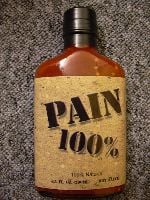 This is the first in a series on Understanding Pain. Please note SWOPT prides itself in our abilities to explain pain to facilitate your rehab process.
This is the first in a series on Understanding Pain. Please note SWOPT prides itself in our abilities to explain pain to facilitate your rehab process.
Respectfully,
Kale Isaacson, PT
All experiences with pain are a normal response to what your brain thinks is a threat to the body. What is important to remember is that the amount of pain you feel does not directly relate to the amount of tissue damage. The overall “picture” of the pain experience seen by the brain relies on many sensations from the body. Consider a bone that breaks and goes through the skin. There is the sound of the fracture, there is the sight of blood and the bone, there is the sensation on the skin of the blood and the torn skin, and finally, then comes the pain.
Pain was designed as a primitive protective system to prevent further tissue damage and protect from further injury. Imagine if we did not feel pain after the broken bone occurred. We would try to walk on our leg and really mess things up. One of the main advantages that humans have over the animal kingdom is that we can use our memories and reasoning ability to avoid injury and/or danger before it happens the next time. With this in mind, let’s think about a toddler around 18 months old.
The child has very limited experience with injury especially since the parents’ job is to protect their children in the early years. Notice that when the toddler hurts himself, they often look to their parents before screaming with pain. This is also a good example how all the child’s sensations must first rush to the brain to be processed before pain is actually felt.
Historically, the medical view has been that older and younger people feel less pain than middle-aged people. However, all of the new research on pain education demonstrates otherwise. Some pains, such as back pain, do vary throughout a lifetime. For example, people over 60 do have less back pain than middle-aged adults, while children, especially those less than 10 years old bend like rubber bands and rarely feel back pain. Consider this: During a child’s first or second set of shots, the pain behaviors of a young, circumcised boy are more animated than those of a non-circumcised boy (Go figure).
This concludes Blog #1 on Pain. Please check back regularly or sign up for the Blog to be e-mailed to you each time we post a new one. Cheers. Kale





